Palermo is a beautiful example of a classic Italian city with modern facilities developed around a historical center. The Sicilian capital has a gloomy past, with numerous mafia incidents in the area of organized crime, but nowadays the things have changed a lot; the city has “calmed down” a lot and presented the notes of an impressive mixture of architectural and ornamental styles, such as Byzantine, Arab and Italian.
As in many other places in Italy, a walk in the center of Palermo will take you on a journey with scenery that seems timeless. From the historical buildings that overflow the old center to the vibrant atmosphere in the street shops, from the primitive urban beaches to the local food and wines, Palermo has the gift of leaving a permanent trace in the souls of those who visit it. So, if you have a chance, please visit Palermo and get the best of it! In our opinion, a holiday in Sicily cannot be complete without even a day spent in her capital, which is why we have selected 10 best places to visit in Palermo.
Norman Palace (Palazzo dei Normanni)
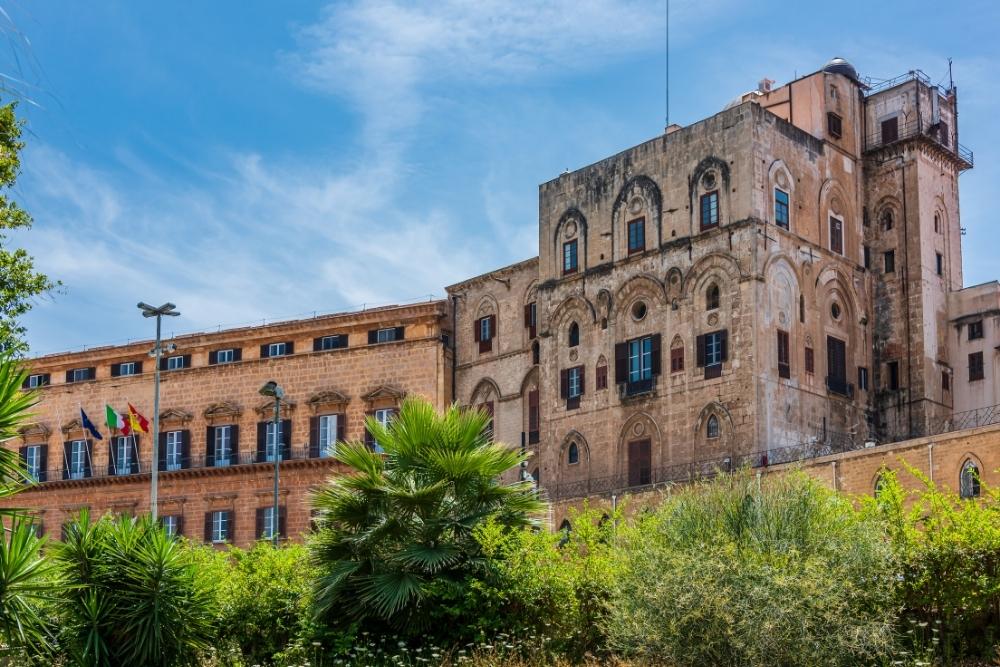
The Royal Palace or the Norman Palace served in the past as the central throne of the kings of Sicily. It is the oldest Royal Palace in Europe and one of the must-visit places in Sicily. The construction started in the 9th century by the Emir of Palermo and continued by the Normans after conquering the city in 1072, six years after they had conquered England.
You will immediately notify both the Norman and the Moorish influences, the Palace emanating a general feeling of official sobriety, which imposes respect. A prominent feature is the central courtyard, which presents beautiful arcades and decorations made of stone.
In addition, Capella Palatina is a building next to the Palace, with beautiful mosaics and works of art dating back hundreds of years. Nowadays, the Palace is also the host of the Astronomical Observatory of Palermo. All in all, a royal residence that can be considered a piece of Sicilian history.
And don’t forget, while in Italy, try to visit all these 50 famous landmarks.
Capuchin Monastery and the Capuchin Catacombs of Palermo
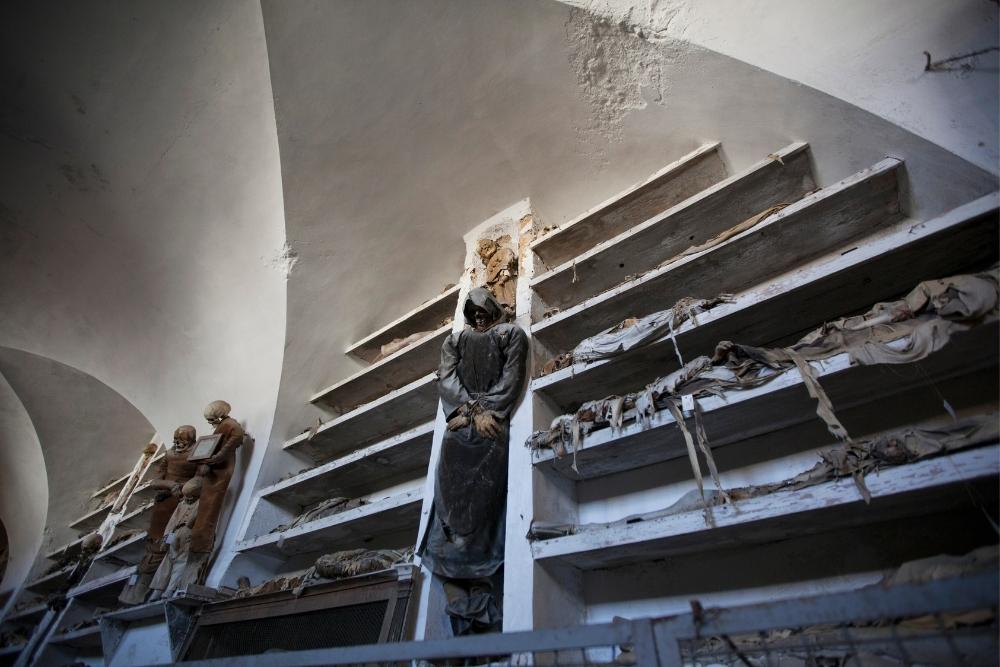
The Order of the Capuchin Monks dates back to the 16th century, and this monastery was built to be used by these monks at will. The construction itself is not a fantastic building. Still, the Catacombs (Catacombe dei Cappuccini) represent the real wonder here, as it is a different tourist attraction, accessed by those with… strong hearts.
And that’s because here you can go through the vast underground catacombs by observing gruesome details about the burial places of the monks and the well-preserved bodies from different periods. The Capuchin monks kept the bodies in their original clothes. They used various embalming techniques that made us see them as such today, placing the bodies either in glass cabinets or supported by walls and crypts.
Initially, the catacombs were intended only for the brotherhood of the capuchin, but centuries later, the idea of being buried here had become very fashionable. In their wills, the lighted heads of Palermo demanded to be buried in Catacombs wearing certain clothes, and even some demanded that their garments be changed at specific intervals. The priests wore clerical outfits, but others dressed according to the fashion of that time. Relatives descended underground to pray for the dead, care for their bodies, and maintain them in a presentable condition.
The last Capuchin monk buried here was brother Riccardo in 1871. However, other famous persons followed after this year until 1880, when the Catacombs were officially (and temporarily) closed. The last funerals date back to the 20s of the previous century.
Therefore, you can take a guided tour of the Catacombs in Palermo, visiting the macabre underground graveyard, where over 8000 bodies and 1252 mummies rest, strangely arranged in “categories”: men, women, children, virgins, monks, priests, and professionals.
Mondello Beach
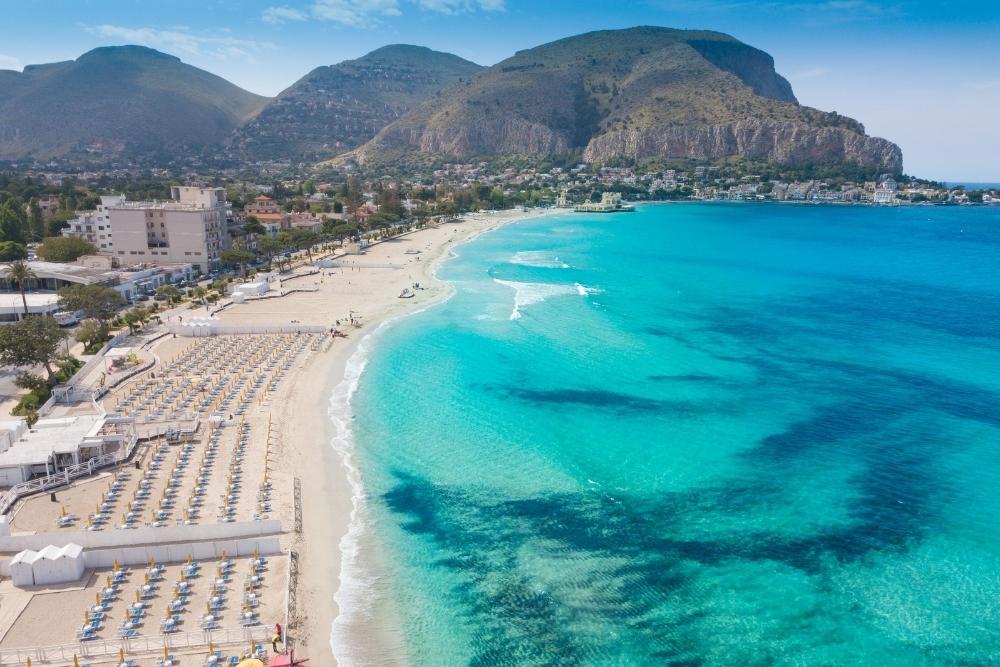
If you instantly want to have sun and sea in Palermo, then Mondello beach is the best place to go. Located 10 kilometers from the old town, Mondello is the nearest beach to the capital of Sicily. Here you will get some classic elements, but equally beautiful: fine white sand, washed by turquoise waters of the Tyrrhenian Sea.
On the other hand, Mondello is a beautiful place to spend time because of the gorgeous beach and the relaxing and refreshing “escape” that it proposes. Because next to (or on) the beach you will find a rich selection of bars and restaurants suitable for all pockets.
Saint John of the Hermits (San Giovanni degli Eremiti)
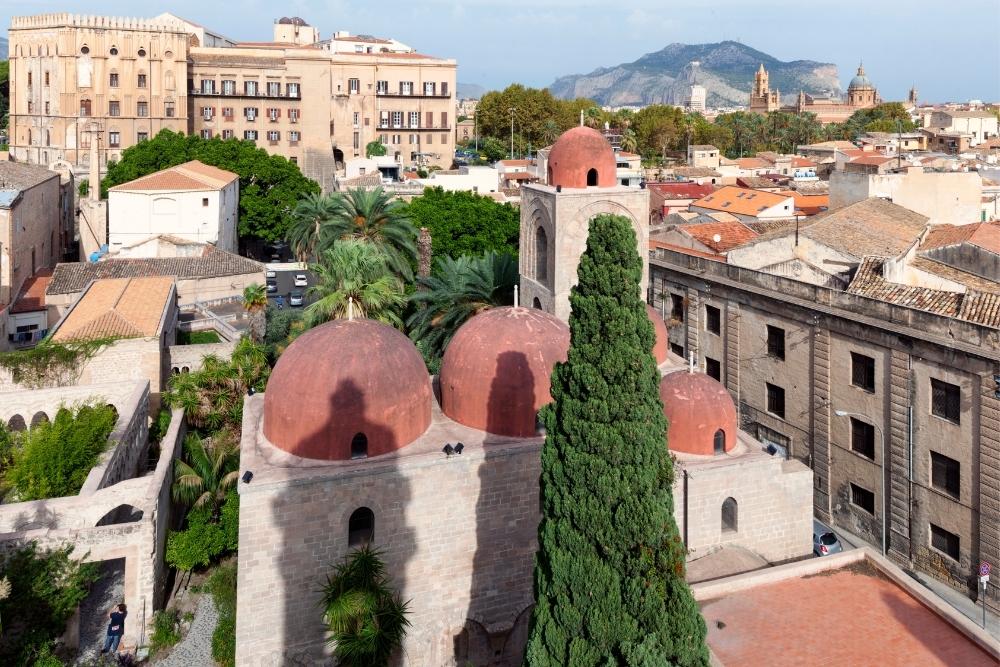
San Giovanni degli Eremiti is a small and charming church, a building dating back to the sixth century, surprisingly well preserved, despite the passing of the years.
The architectural style is considered a combination of Arabic and Norman influences, with late Roman elements. The domes towers, which make the delight of this church, are at one end of it, having a bright red color, incredibly vibrant, even after so long. The relatively simple interior does not abound in decorations, having only a few frescoes and religious works of art. Behind the church, there is a beautiful garden full of exotic plants and numerous tree species.
Quatro Canti
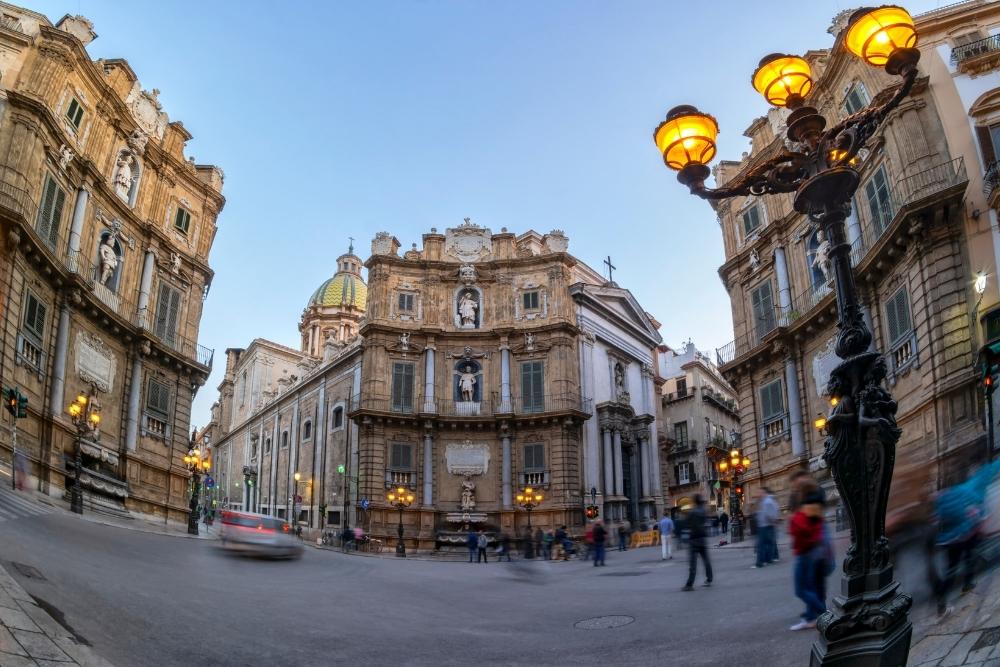
If you walk through the streets of downtown Palermo, you will eventually reach an amazing intersection. This open circular space was arranged between 1608 and 1620 by the Roman architect Giulio Lasso, at the junction of two important streets in Palermo: Cassarò (now known as Vittorio Emanuele), which starts from the Palace of the Normans to reach the harbor, and Via Nuova, renamed Maqueda, after the name of a Spanish vice-king.
Lasso designed Quattro Canti with concave facades in all of its four “corners.” At the ground level, in every corner, he built a fountain with figures carved on the three groups and columns in the Greek style, completed long after 1620. Accordingly, above the sculptures symbolizing the four seasons was possible to introduce statues of the four Spanish kings who ruled in Palermo since 1516.
Hidden behind one of the concave corners is the Church of Saint Giuseppe dei Teatini, a basilica built between 1612 and 1645, in Baroque style, whose entrance is on Vittorio Emanuele Street. The church’s interior houses The Triumph of A. Andrea Avellino, a painting belonging to the artist Guglielmo Borreman (1724), paintings by Pietro Novelli, stucco and marble decorations from the end of the eighteenth century.
La Martorana
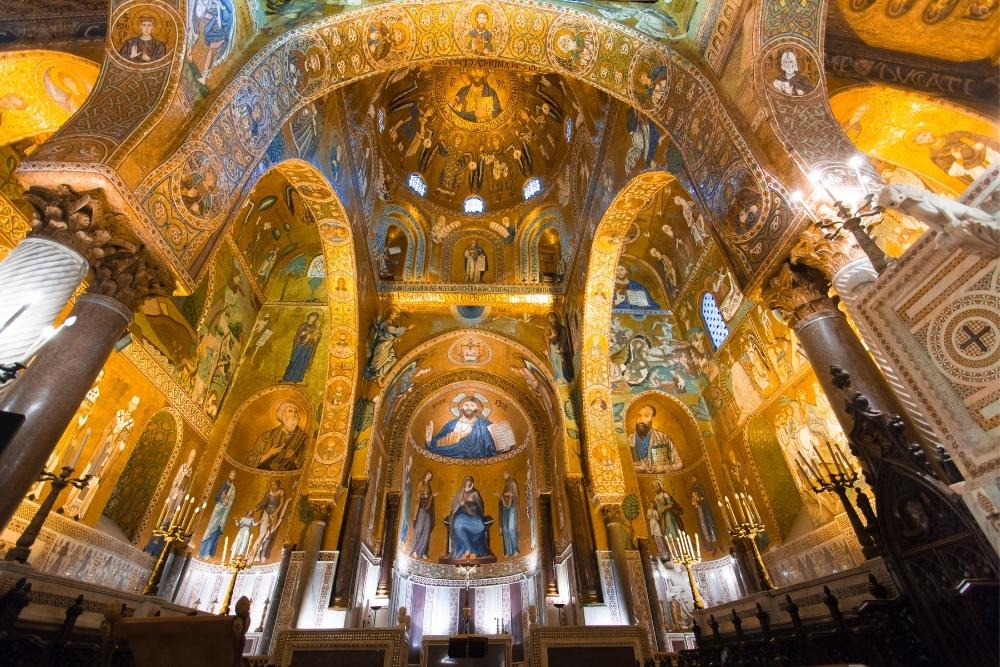
The Church of Santa Maria dell’Ammiraglio, known as La Martorana, is especially famous for its beautiful 12th-century mosaics. The Baroque front, added to the church with the belfry after an earthquake in the 1720s, completes the construction with an air of Arab influence, but its basic architectural concept remains Byzantine.
It was designed as a church with domes, four arms of equal length, and an altar with three sides, the dominant style in the Byzantine period. Later, La Martorana underwent considerable changes – in 1200, a narthex, a vestibule, and a bell were added to the west.
In 1435, King Alfonso of Aragon offered La Martorana to the Benedictine nuns. In the seventeenth century, the pronaos and the open atrium were included in the main structure, explaining the current irregular shape. Between 1683 and 1686, the central apse and its mosaics were removed and replaced with a larger rectangular room. Nuns also added frescoes painted on the walls.
Mercato del Capo
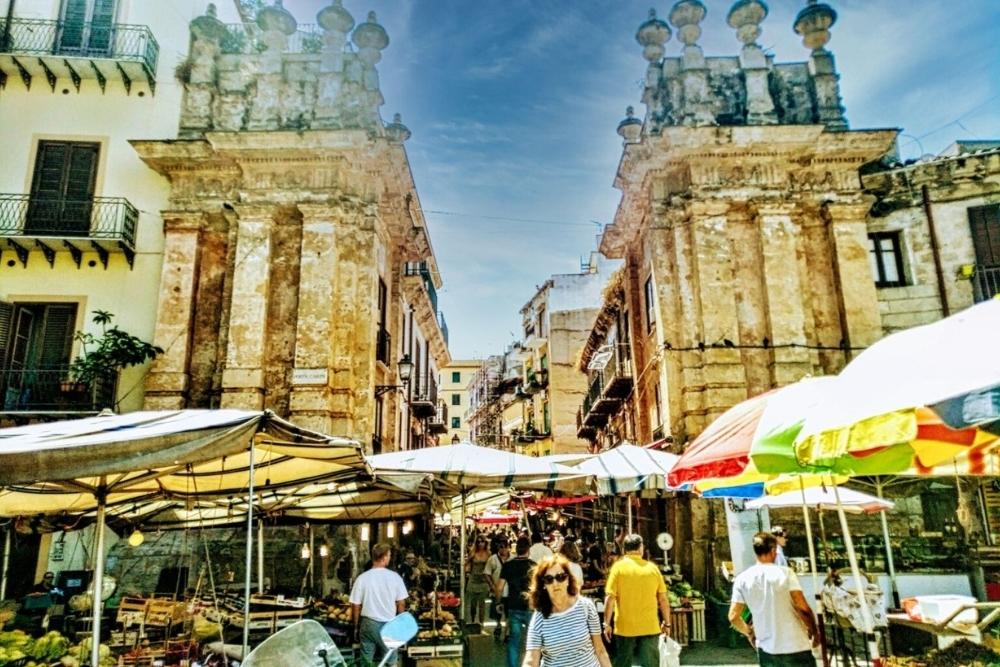
Known among the locals as Mercato del Capo, the farmers’ market should be on the Palermo tourist attraction list if you want to taste the delicious local delicacies. It is a street market, spanning 200 meters, starting from Porta Carini and up to the west of Massimo Theater. Here you can find various assortments of goods, from fresh fruits and vegetables to fish, meat, street food, and souvenirs.
Try Sfincione (fluffy pizza covered with tomato sauce, onions, and caciocavallo cheese) and Arancine (rice balls scented with saffron, stuffed with shrimp and pesto or spinach and smoked cheese), two of the trendy local delicacies. You can place them with a glass of Marsala wine at one of the many bars near the square.
Mount Pellegrino
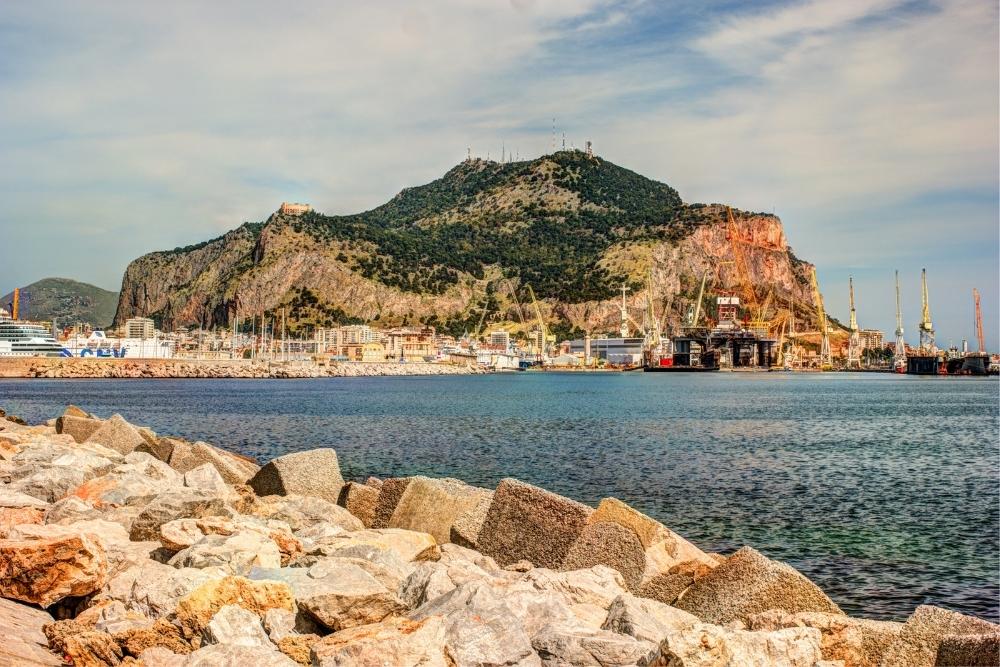
Sicily is a mainly mountainous and hilly island. The Monte Pellegrino is located near Palermo and offers a relaxing escape into nature, with unparalleled views of the Mediterranean Sea and the city.
Located just 15 kilometers from the city center, the mountain is easy to get: a regular schedule of buses reaches him, starting from Politeama. But if you feel fit, you can hike to the top of Pellegrino. Not very easy, but not extremely heavy.
Palermo old town
The Old Center of Palermo tour begins with Quattro Canti (located just next to Piazza Pretoria), the intersection framed by four buildings decorated with fountains and considered the zero point of the neighborhood. The Old Center of Palermo will take you on a journey back in time full of splendid historical buildings, baroque palaces, and ornamental sculptures.
Do not hesitate to step on the narrow alleys that intersect with the main streets during the walk, as they turn into excellent shortcuts. There are plenty of shops in the area, bars, cafes and restaurants where you can take shorter or longer breaks while exploring the beautiful city.
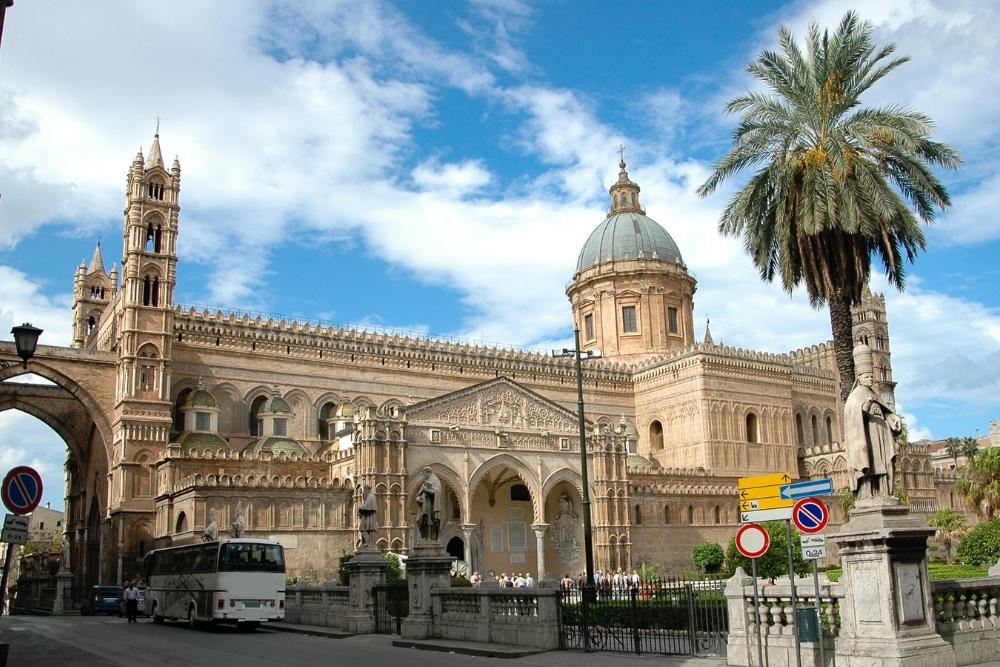
Because of the various invasions that the city has undergone over time, the Palermo Cathedral combines many different styles (the last architectural intervention took place in the 18th century), being a genuinely fascinating attraction.
Initially built in 1185 by the Archbishop of Norand Walter Ophamil, on the site of a church founded by Pope Gregory I, the cathedral had many roles in the following centuries, including the mosque and… the crypt.
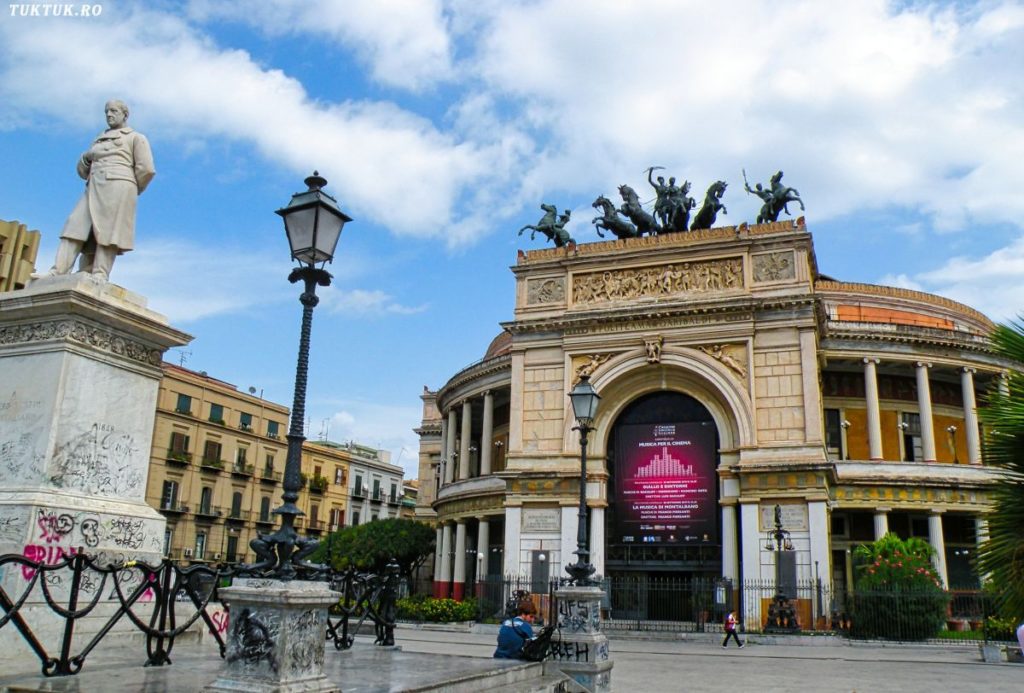
The Moorish influence is present on the outside; it can be seen in the central basilica and in the high tower, with the Renaissance clock. The lateral entrance of the portico has many ornamented columns and a triangular fronton with a detailed fresco. On the inside, a prominent feature is the treasure chamber. Various artifacts from different periods of the cathedral are preserved. The tomb of Emperor Frederick II is also located here.
You may also like: A tasting session of Madeira wines in Funchal

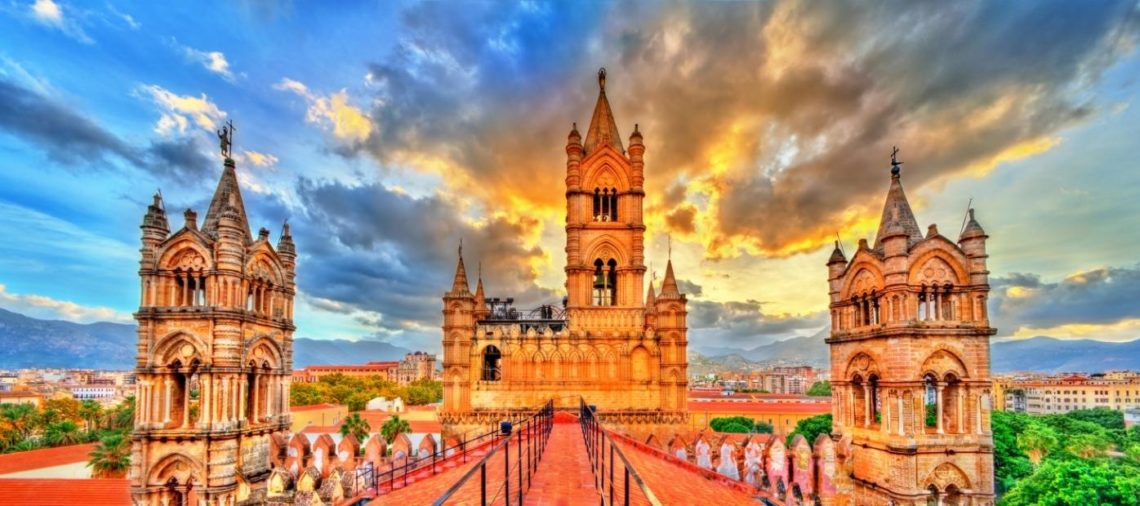



Comments 1